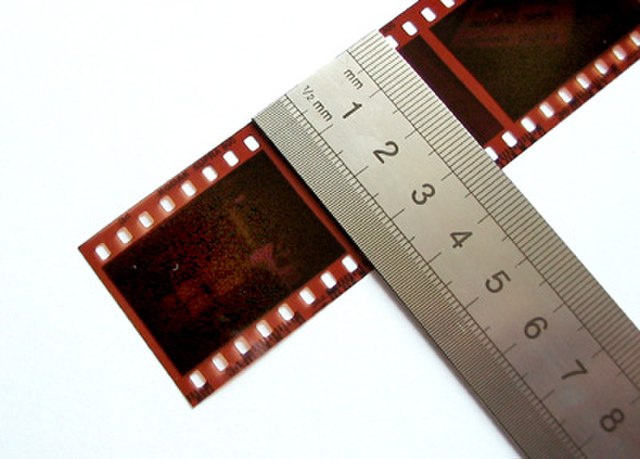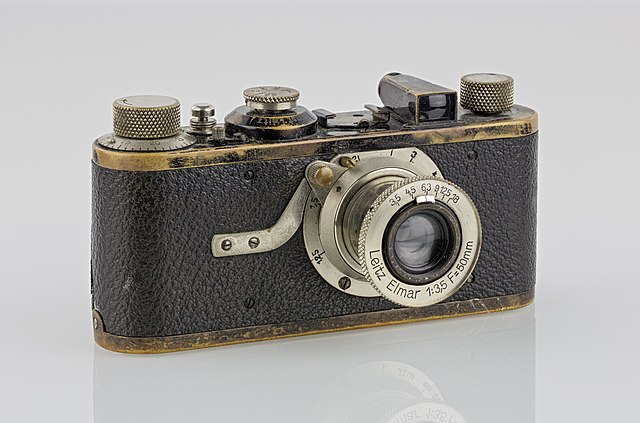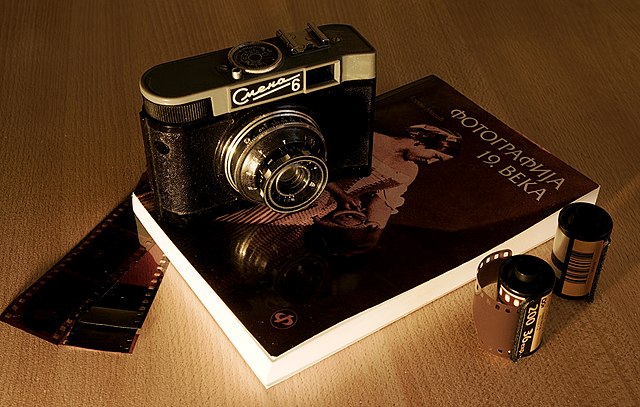DX encoding is an ANSI and I3A standard, originally introduced by Kodak in March 1983, for marking 135 and APS photographic film and film cartridges. It consists of several parts, a latent image DX film edge barcode on the film below the sprocket holes, a code on the cartridge used by automatic cameras, and a barcode on the cartridge read by photo-finishing machines.
135 Film Cartridge with DX barcode (top) and DX CAS code. The CAS code shows this is (top row) ISO 125 film, (bottom row) 24 exposures, +3/−1 f-stop exposure tolerance. The DX barcode reads 017563, showing DX number 109-12, 24 exposures.
Codes on Kodak ISO 400 color negative film
DX film edge barcode
135 film, more popularly referred to as 35 mm film or 35 mm, is a format of photographic film with a film gauge of 35 mm (1.4 in) loaded into a standardized type of magazine for use in 135 film cameras.
135 film. The film is 35 mm (1.4 in) wide. Each image is 24×36 mm in the most common "small film" format (sometimes called "double-frame" for its relationship to the "single-frame" 35 mm movie format or full frame after the introduction of 135 sized digital sensors. Confusingly, full frame was also used to describe the Full gate of the movie format half the size)
Leica I, 1927, the first successful camera worldwide for 35 cine film
Soviet camera Smena 6 with 35 mm films
Minox 35 ML, one of the smallest cameras built for the 135 film







